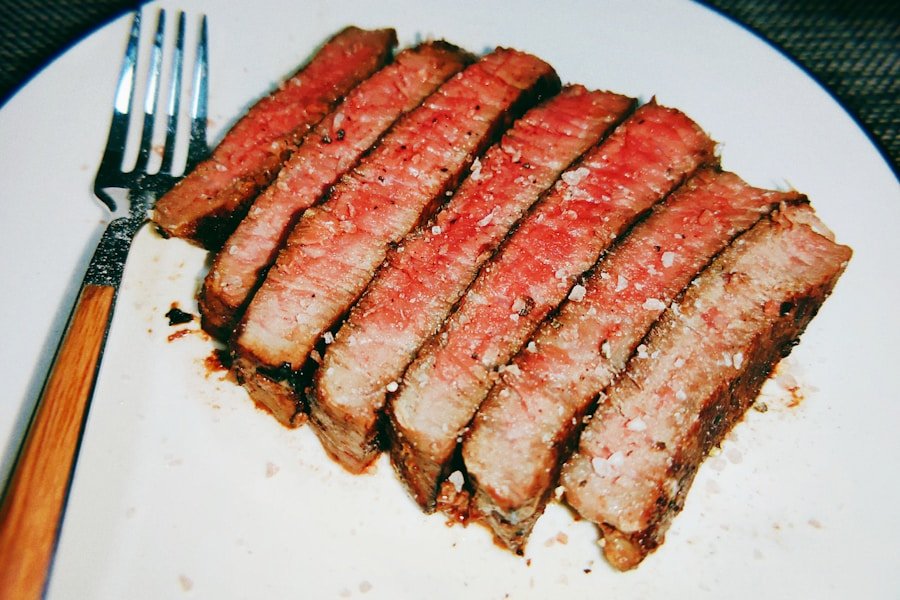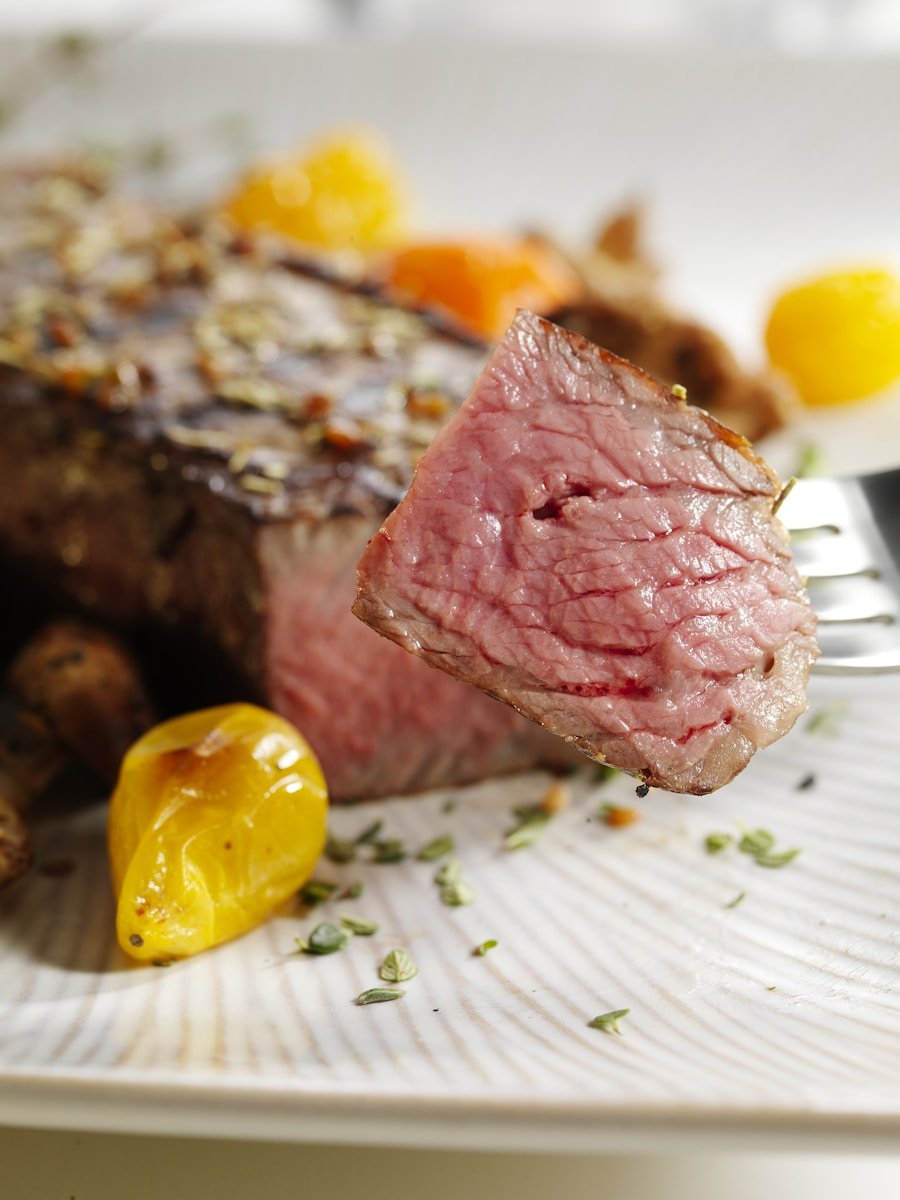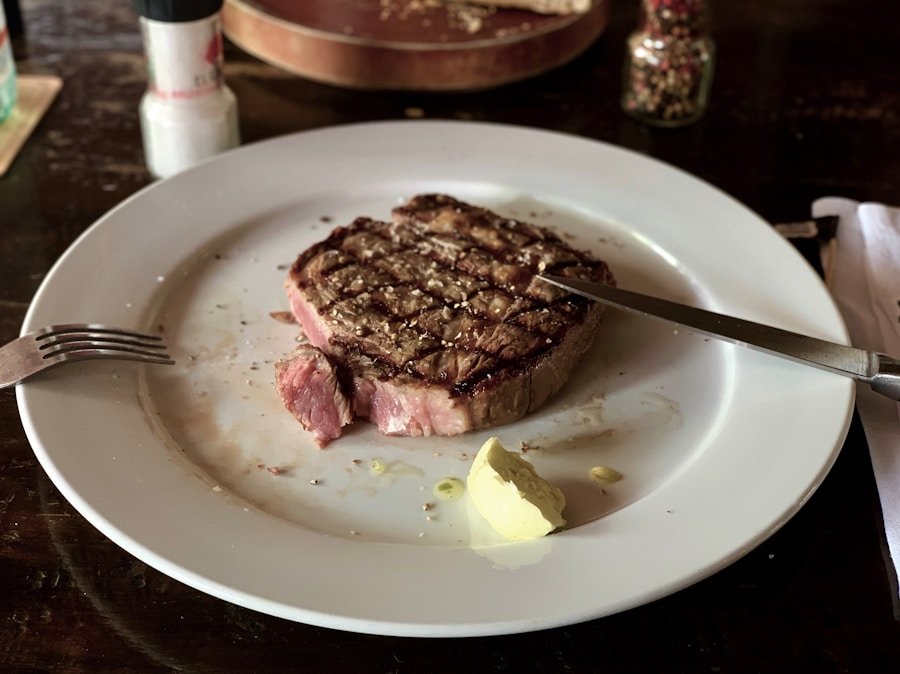Poor Man’s Prime Rib is a culinary gem that allows home cooks to enjoy the rich, succulent flavors of prime rib without the hefty price tag typically associated with this cut of meat. This dish is not merely a budget-friendly alternative; it embodies the spirit of resourcefulness in the kitchen, transforming more affordable cuts of beef into a meal that feels indulgent and celebratory. The concept revolves around using cuts like chuck roast or ribeye, which, when prepared correctly, can yield a tender and flavorful experience reminiscent of traditional prime rib.
It can be served at family gatherings, holiday feasts, or even a casual weeknight dinner, making it a staple for those who appreciate hearty, satisfying meals. The preparation process may require some time and attention, but the rewards are well worth the effort.
With the right techniques and seasonings, this dish can impress even the most discerning palates, proving that great flavor does not have to come at a premium.
Key Takeaways
- Poor Man’s Prime Rib is a budget-friendly alternative to traditional prime rib, using a different cut of beef to achieve a similar taste and texture.
- Choosing the right cuts of beef, such as chuck roast or top round, is essential for creating a tender and flavorful Poor Man’s Prime Rib.
- Preparing the beef by trimming excess fat and tying it with kitchen twine helps to ensure even cooking and a more appealing presentation.
- Seasoning and flavoring the beef with a simple yet flavorful blend of herbs, spices, and garlic enhances the natural taste of the meat.
- Cooking the beef to perfection involves using a meat thermometer to achieve the desired level of doneness and allowing the meat to rest before slicing and serving.
Choosing the Right Cuts of Beef
Selecting the appropriate cut of beef is crucial for achieving the desired flavor and texture in Poor Man’s Prime Rib. While prime rib is typically derived from the rib section of the cow, more economical options such as chuck roast or bottom round can serve as excellent substitutes. Chuck roast, for instance, is known for its rich marbling and robust flavor, which can mimic the taste profile of prime rib when cooked properly.
The marbling in chuck roast helps to keep the meat moist during cooking, resulting in a tender and juicy final product. Another viable option is the ribeye steak, which is cut from the same area as prime rib but is often more affordable when purchased in larger portions. Ribeye steaks are well-marbled and flavorful, making them an excellent choice for those looking to replicate the luxurious experience of prime rib without breaking the bank.
When selecting your cut, look for well-marbled pieces with a good amount of fat, as this will enhance both flavor and tenderness during cooking. Additionally, consider the size of the cut based on your serving needs; larger roasts can be ideal for gatherings, while smaller cuts may be better suited for intimate dinners.
Preparing the Beef for Cooking

Once you have chosen your cut of beef, the next step is to prepare it for cooking. Proper preparation begins with trimming any excess fat from the exterior of the meat. While some fat is beneficial for flavor and moisture retention, too much can lead to greasiness.
Aim to leave a thin layer of fat on the surface to enhance flavor while ensuring that it does not overwhelm the dish. After trimming, it’s essential to allow the meat to come to room temperature before cooking. This step helps ensure even cooking throughout the roast.
Marinating or dry-brining the beef can significantly enhance its flavor and tenderness. A simple dry brine involves seasoning the meat generously with salt and allowing it to rest in the refrigerator for several hours or overnight. This process draws moisture into the meat and helps break down proteins, resulting in a more tender texture.
If you prefer marinating, consider using a mixture of olive oil, vinegar, garlic, and herbs to infuse additional flavors into the beef. Regardless of your method, allowing time for seasoning to penetrate will elevate your Poor Man’s Prime Rib to new heights.
Seasoning and Flavoring the Beef
Seasoning is a critical component in achieving a delicious Poor Man’s Prime Rib. The right blend of spices can enhance the natural flavors of the beef while adding depth and complexity to the dish. A classic approach involves using a combination of kosher salt, black pepper, garlic powder, and onion powder.
This simple yet effective seasoning mix allows the beef’s inherent flavors to shine through while providing a savory crust during cooking. For those looking to experiment with flavors, consider incorporating fresh herbs such as rosemary or thyme into your seasoning mix. These herbs complement beef beautifully and can be used either fresh or dried.
A rub made from crushed garlic cloves mixed with olive oil and herbs can create a fragrant paste that adheres well to the meat’s surface. Additionally, some cooks opt for a touch of Worcestershire sauce or soy sauce to introduce umami notes that deepen the overall flavor profile. Whichever seasoning method you choose, be sure to apply it generously and evenly across all surfaces of the meat for maximum impact.
Cooking the Beef to Perfection
Cooking Poor Man’s Prime Rib requires careful attention to temperature and technique to achieve that perfect balance of tenderness and juiciness. One popular method is roasting in an oven, which allows for even cooking and browning. Preheat your oven to a high temperature—around 450°F (232°C)—to create a beautiful crust on the outside of the meat.
After searing for about 20 minutes at this high temperature, reduce the heat to around 325°F (163°C) and continue cooking until the internal temperature reaches your desired doneness. Using a meat thermometer is essential for monitoring doneness accurately. For medium-rare, aim for an internal temperature of about 130°F (54°C), while medium should reach around 140°F (60°C).
Remember that the meat will continue to cook slightly after being removed from the oven due to residual heat, so it’s wise to take it out when it’s about 5°F (2°C) below your target temperature. Allowing the roast to rest for at least 15-20 minutes before slicing is crucial; this resting period allows juices to redistribute throughout the meat, ensuring each slice is moist and flavorful.
Serving and Enjoying the Poor Man’s Prime Rib

When it comes time to serve your Poor Man’s Prime Rib, presentation plays an important role in enhancing the dining experience. Slicing against the grain is key to achieving tender pieces that are easy to chew. Arrange slices on a platter and consider garnishing with fresh herbs or roasted vegetables for added color and appeal.
Pairing your roast with traditional sides such as creamy mashed potatoes, roasted Brussels sprouts, or Yorkshire pudding can elevate your meal further and create a festive atmosphere. Accompanying sauces can also enhance your Poor Man’s Prime Rib experience. A rich au jus made from pan drippings or a horseradish cream sauce can provide contrasting flavors that complement the beef beautifully.
For those who enjoy a bit of heat, consider serving with a spicy chimichurri sauce or a tangy barbecue sauce for an unexpected twist. The key is to create a balanced plate that highlights both the flavors of the beef and any accompanying dishes.
Variations and Additions to the Recipe
While Poor Man’s Prime Rib is delicious in its classic form, there are numerous variations and additions that can personalize this dish according to your taste preferences.
This creates an additional layer of texture and flavor that can elevate your roast significantly.
Alternatively, consider wrapping your beef in bacon before cooking; this not only adds flavor but also helps keep moisture locked in during roasting. For those who enjoy experimenting with different cuisines, consider infusing international flavors into your Poor Man’s Prime Rib preparation. A marinade inspired by Asian cuisine could include soy sauce, ginger, sesame oil, and scallions for an exciting twist on traditional seasoning methods.
Similarly, using spices like cumin and coriander can lend a Middle Eastern flair to your roast. The possibilities are endless; feel free to explore various flavor profiles that resonate with your culinary preferences.
Conclusion and Final Tips for Making Poor Man’s Prime Rib
Creating a memorable Poor Man’s Prime Rib experience hinges on attention to detail throughout every stage of preparation and cooking. From selecting quality cuts of beef to mastering seasoning techniques and cooking methods, each step contributes significantly to achieving that coveted tender and flavorful result. Remember that patience is key; allowing time for marinating or resting will pay off in terms of flavor and texture.
As you embark on your journey to make Poor Man’s Prime Rib, don’t hesitate to make adjustments based on personal taste or dietary preferences. Whether you choose to experiment with different cuts of beef or explore unique seasoning blends, embrace creativity in your kitchen endeavors. With practice and passion, you’ll find that this budget-friendly dish can become a beloved staple in your culinary repertoire—one that brings joy not only through its taste but also through shared moments around the dining table with family and friends.
If you’re looking to elevate your home cooking even further, you may want to check out this article on unique flavors from around the world that can transform your dishes. By incorporating new and exciting ingredients into your recipes, you can take your culinary creations to the next level. This article provides insight into how different flavors can enhance your cooking and inspire you to try new things in the kitchen.
FAQs
What is a poor man’s prime rib?
A poor man’s prime rib is a budget-friendly alternative to traditional prime rib that uses tender beef cuts such as chuck roast or top sirloin.
How do you make a poor man’s prime rib?
To make a poor man’s prime rib, you can season a tender beef cut with a blend of herbs and spices, then roast it in the oven until it reaches the desired level of doneness.
What are some tender beef cuts that can be used for a poor man’s prime rib?
Tender beef cuts that can be used for a poor man’s prime rib include chuck roast, top sirloin, and round roast.
What are the benefits of making a poor man’s prime rib?
The benefits of making a poor man’s prime rib include cost savings, as tender beef cuts are typically more affordable than traditional prime rib, while still providing a delicious and satisfying meal.
Can a poor man’s prime rib be as delicious as traditional prime rib?
Yes, a well-prepared poor man’s prime rib can be just as delicious as traditional prime rib, as long as the beef is cooked to the proper level of doneness and seasoned with flavorful herbs and spices.
